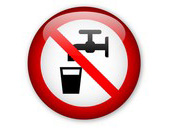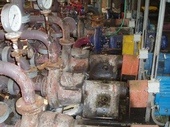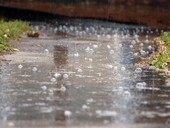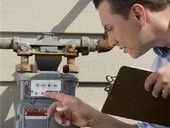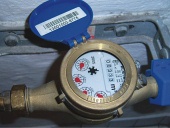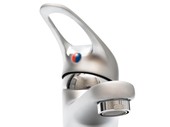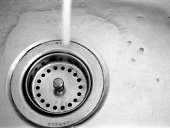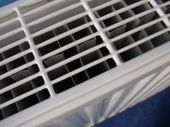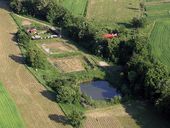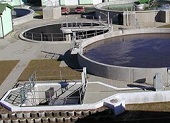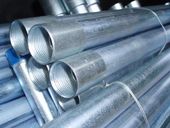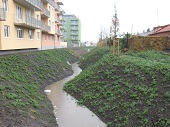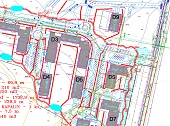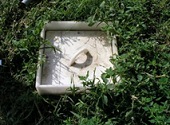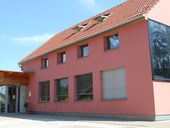Gray water use system in buildings is not only suitable for new buildings, but also for buildings under reconstruction. However, it is necessary to calculate the profitability of gray water use for each building separately.
Archiv článků od 23.5.2011 do 5.12.2011
Quality product is dependent on reliable and serviceable manufacturing facility, which is influenced by effective and timely performed maintenance. In order to check the operating parameters it is possible to use vibrodiagnostics, tribodiagnostics, termodiagnostics, non-destructive testing methods and others. It's difficult to choose the right moment to implement maintenance inspection in order to exploit the whole equipment life time and reduced risk of breakdown failure. The fundamental rules for determining the maintenance measurement interval in the diagnostic management system has not been established. Therefore, the emphasis is on determining the interval for measuring of the implementation of periodic data collection, which is more often used than the on-line diagnostic systems for secondary production techniques and technologies with a parallel backup. Proposal for a definition of the calculation of interval measurement is based on the assumption that the calculation must reproduce the behavior of the measured variables and dynamically respond to changes in the trend of damage. Technology has been chosen with a sufficient history of operations and maintenance, to check whether the model of the calculation of the dynamic range of measurement is usable in engineering practice and if it is sufficient enough be to manage and plan the maintenance action. To verify the model five pumps with three parallel backups were used. A major finding from these results is the fact that under the dynamic interval only four more measurements were made than if the measurements were carried out at regular intervals. Just the last four measurements before the outage was made within 31 days, which would normally correspond to one measurement interval. On the other hand, it is necessary under the regular intervals to verify the step change of measured values. This difference in the number of measurements compensated in practice is usually equal to the number of measurements in dynamic mode interval. If based on the premise that the number of measurements under the dynamic range is the same as at regular intervals and use this method in this direction "zero cost" essential contribution is primarily the cost savings on storage of spare parts and reduce the likelihood of other costs with overtime up to 60% compared with measurements carried out at regular intervals. Undeniable contribution to maintenance is also a fact that by making a service action with the deployment of dynamic range measurements, it can even closer determine real life time of bearing and it is possible to use of the maximum potential production of equipment.
Design of material internal water supply must contain conditions for implementation and operation of the work. Completion certificate must include a properly prepared documentation of the actual design and also the conditions for its proper operation. The client (operator) of the work should be involved in the design of the material.
The author describes methods of calculation for the size (volume) of storage tanks regarding the central heating of WSW (Warm Service Water) in three different methods and approaches to the said problem. The author counts to summarize the problem in three independent parts due to the fact that it relates to the complex problem closely connected with a building specific energy demand, which is exceeding the contents of one article. The second part is to be dedicated to other methods of the design, particularly to the design pursuant to the standard ČSN EN 15316-3. The author shall evaluate results of calculations with specified methods and shall compare the appropriateness of their use for the application as to the family house and the apartment dwelling house in the third part.
Setting the real price for water treatment will cause increasing of the decentralized solutions. For objects without a continuous operation a septic tank is suitable in combination with final water purification system. What the Building Act, Water Act and other regulations? The interpretation of current legislation for sewage disposal is object of this paper.
Monitoring of wastewater from different types of sewer systems showed significant differences in mean concentrations of indicators of vacuum, pressure and gravity sewers. The results of monitoring of waste water at the pressure and vacuum system showed a higher concentration of contamination of raw sewage.
In this article, structural design of selected parts of the dewatering system of the living com-plex is described, the impact of construction procedure on particular parts of the living com-plex is discussed and first experience from the operation of the dewatering system is menti-oned. Further, the expert opinion of selected manager is added and the principles of service regula-tions are presented.
The article shows the pros and cons of the root of sewage treatment plants, the basic operating principles, factors influencing the effectiveness and suitability / unsuitability for the use of certain types of wastewater. Root wastewater treatment plants are inexpensive and easy to operate system, able to reduce pollution to acceptable levels for discharge into waterways.
Paper describes design progres of surface drainage of residential area for approximately 1 800 inhabitants on area of 9 hectares (ha). Philosophy of rain water management is based on rain water drainage combined surface and shallow un-dersurface equipments connecting residential blocks with stream. Paper advert to several unusual factors, that are not occured in classic sewerage drainage of rain water. But in design used surface and shallow undersurface equipments these factors show cardinal importace for general conception of water drainage. Described is maximum investor effort to save money and possible negative impact on general conception of water drainage.
In the pilot project was built a model for partitioning and accumulation of yellow water. The object of the pilot project was to design and to verify an appropriate length of storage of yellow water so that it can be used in agriculture. The result is a recommendation to store 6-9 měsíclů yellow water before use.
Much has been written about this Moravian Village at the foot of the White Carpathian Mountains. It is renown for its environmental projects, it has been visited by many prominent personalities and it is considered an example of energy saving and environmental construction. This time, we have focused on a passive house that works as a model of environmental projects in rural areas.
Because the current regulations [2], [3] prefer rainwater infiltration, and there was no detailed technical regulation for drainage facilities design, then a technical tool [4] was issued and a new standard ČSN 75 9010 is being prepared, addressing the technical aspects of design, construction and operation rainwater infiltration facilities. This paper posts information about how design drainage facilities, which is in the draft of the new standard ČSN 75 9010.
Heavy metals impair the quality of water resources and the need for complex water treatment technologies. Dangerous is the capacity to accumulate heavy metals in plants and animal flesh, then at higher concentrations their toxicity. Monitored as mercury, arsenic, antimony, cadmium, lead, chromium, nickel.
zpět na aktuální články
